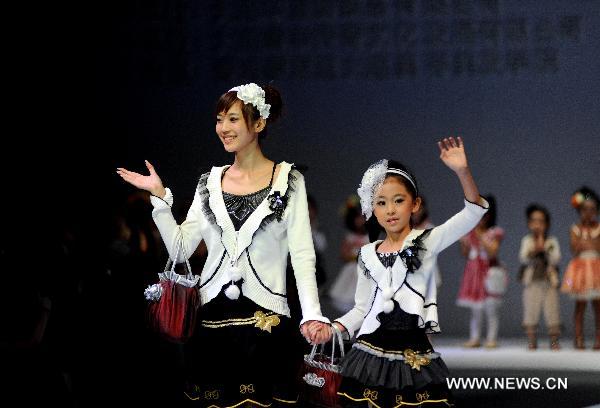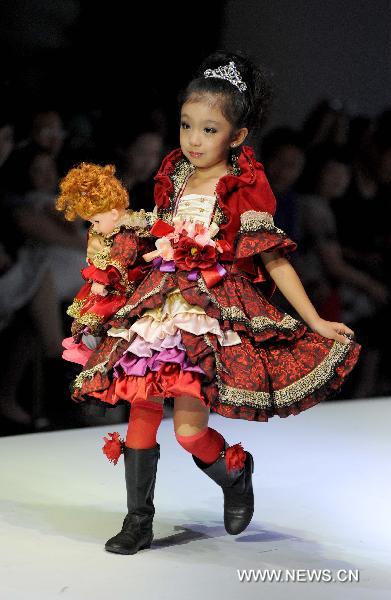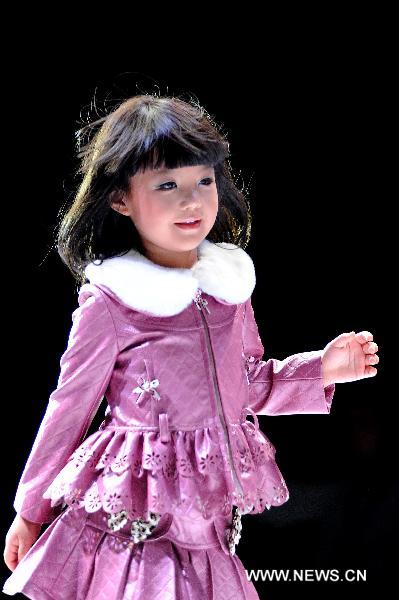 Julia Alcântara
Julia Alcântara Billy Hazel
Billy Hazel Kristin G
Kristin G Izzy Bea
Izzy Bea Guiri Uribe
Guiri Uribe

The successful alliance between supermodel Kate Moss and clothing chain Topshop that persisted for three years, is now towards concluding, the year-end.
The clothing chain has 10 outlets spread across Northern Ireland. Topshop’s autumn and winter collection designed by Moss would be the fourth and last collection of the alliance.
Moss got into this partnership with the clothing chain through her friendship bonds with the chains owner, a retail tycoon, Sir Philip Green. Now, as the alliance sees its end and both parties refute any rift, with owner of the chain saying that they are bringing an end to the collaboration as Moss has other commitments.
The 36 year old model is believed to have taken home at least £3 million for the collections she designed, a majority of which became popular amongst Topshop customers. Three years back, when her first collection was launched by the clothing chain and thousands of people lined up in front of the chains flagship store at Oxford Street.
A year back, the renowned international model aided establishment of the chain’s outlet in New York in US, and even did the same for the chain’s West London outlet at Knightsbridge, in May this year.
Sir Philip here clarified that, though working together was a pleasure for both the parties, but as the job was getting too time consuming, the model was not willing to further carry on with this full-time job.
This was the earliest alliance between a clothing chain and a celebrity, which was then followed by H&M signing Stella McCartney, Madonna and Karl Lagerfeld to design for them.
The Garment Trade's Next Revolution: What's likely to change between 2010 and 2015" looks at the key changes in retailer, brand, consumer and manufacturer needs that will influence the world garment trade between now and 2015.
In the past 20 years, the number of garments being imported into rich countries has increased sixfold - almost entirely the result of production being relocated (and often re-relocated) for greater efficiency.
But between 2010 and 2015, the market may be just as revolutionised as it was between 2005 and 2010 by some crucial changes in the trading environment. Above all, the imminent decline in the number of Chinese of working age - but also by further changes in Customs rules, in buyers' requirements, and in increasingly scarce and costly cotton and power supplies.
"The Garment Trade's Next Revolution: what's likely to change by 2015" reviews the changes likely to start transforming the industry again from about 2012, and makes specific, country by country, predictions about their effect on the garmet trade in the leading 80 garment exporting countries.
Products Mentioned:
Babywear, Bras & Corsetry, Knitted Brief, Men's Anoraks and casual jackets, Men's Coats, Men's Formal Jackets, Men's Jeans, Men's Knitted Shirts, Mens Nightwear, Men's Suits, Men's Swim, Men's Woven Shirts, Men's Woven Trousers, Panties, Slips + petticoats, Socks, Sweaters, T Shirt, Tights (Pantyhose)/stockings/pop socks, Track suits & jogging, Women's Anoraks and casual jackets, Women's Coats, Women's Dresses, Women's Formal Jackets, Women's Jeans, Women's Knitted Blouses, Women's Knitted Trousers, Women's Nightwear, Women's Skirts, Women's Suits, Women's Swim, Women's Trousers, Woven Blouses and Woven brief.
Initial buyers get a FREE copy of edition 2, when we revise our forecasts in the light of new events and reader and commentator feedback.
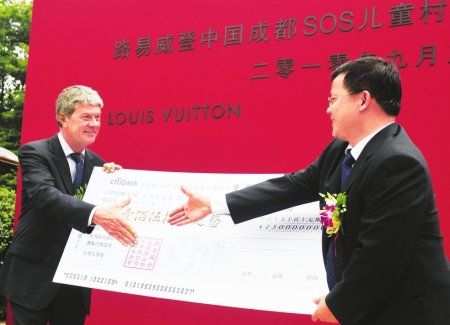
The CEO of LV, Yves Carcelle in representative of LV group donates 1.5 million Yuan to SOS Children's Village in Chengdu, which also declares the cooperation between LV and SOS Children's Village in mainland China.
This money will be used to build a multifunctional activity center so as to create a better environment for kids' education in SOS Children's Village. When this activity center is completed, it will cover an area of 400 square meters with multifunctional activity hall and dressing room and so on.
It is the 10th year when LV entered Chengdu market and a LV flagship store is opened recently. As a leading luxury brand in the world, LV is always zealous at charity. When LV learns that SOS Children's Village lacks a multifunctional activity center, it decides to donate one. For Mr. Yves Carcelle, it is LV's best gift for Chengdu.
photo source: www. wccdaily.com.cn
China's intellectual property rights (IPR) authorities Saturday vowed to play a larger role in the global cause of IPR protection while being more responsible to innovators and the public.
The State Intellectual Property Office (SIPO) Director Tian Lipu made the pledge at a press conference held to recognize the 25th anniversary of Sino-EU cooperation on IPR protection.
Tian said that China and the EU, as two major economies with close trade relations, should further co-operate to create a better environment to encourage and protect innovation in the business world.
At the event, European Patent Office (EPO) President Benoit Battistelli told Xinhua he was optimistic about the future of IPR protection in China, given the rapid progress being made in the country.
Battistelli said relations between the EPO and the SIPO would "continue to be decisive for the successful future development of the patent system on a global level."
Commemorations of the anniversary, held at the ongoing Shanghai World Expo, also included a demonstration of a real-world IPR enforcement case in a moot court setting.
The EPO started cooperating with China in 1985. The two sides are currently implementing the EU-China IPR2 project utilizing a 16 million Euros budget that runs over four years to 2011.
Both the EPO and the SIPO are among the world's five largest patent offices, together with the Japan Patent Office, the Korean IP Office, and the United States Patent and Trademark Office.
China has also grown into one of the most important non-EU countries filing patent applications to the EPO, with the number of patents submitted increasing from 163 in 2000 to 1,621 in 2009.
Esprit Holdings Ltd., the Hong Kong- based clothing retailer that derives 83 percent of its sales from Europe, plans to expand its operations to 400 Chinese cities as revenue from the continent declines.
Mainland China Esprit stores will increase 83 percent to 1,700 within five years to double the company's sales because the world's most-populous nation "represents the biggest growth opportunity," it said in a statement today.
Esprit fell the most in three months in Hong Kong trading today after reporting an 11 percent drop in annual profit as weaker consumer spending in Europe drove sales down, prompting a decision to exit Norway and Portugal. Chief Executive Officer Ronald van der Vis said he may hire designers in China, where retail spending surged 18 percent in July from a year earlier.
"Net income in China should more than double over the next five years and margins will expand as the company achieves scale," Matt Marsden, an equity researcher at Samsung Securities (Asia) Ltd. in Hong Kong. "Doubling revenue there over the next five years implies 15% growth per annum, which they should easily manage."
Esprit plans to have stores in 400 China cities, more than double the existing 169, it said in a statement to Hong Kong's stock exchange today.
China Outlets
Chief Financial Officer Chew Fook Aun said the biggest clothier listed in Hong Kong "hopes to open" at least 20 standalone stores in mainland China this year.
The company has 931 mainland Chinese points of sale, which include department-store counters and standalone stores. Sales for Esprit on the mainland, which excludes Hong Kong, Macau and Taiwan, were at least HK$793 million, 2.4 percent of the total.
"Europe's consumer confidence doesn't look very stable," Chew said. "In the next few years, we are holding higher hopes on mainland market."
Hiring Chinese designers would help Esprit expand in China, said Winnie Fong, an analyst at TaiFook Securities in Hong Kong.
Esprit slid 3.6 percent at the close in Hong Kong trading after its results announcement. The decline extended Esprit's retreat this year to 17 percent, compared with a 4.6 percent drop in the benchmark Hang Seng Index.
Net income for the year ended June fell to HK$4.23 billion, or HK$3.34 a share, from HK$4.75 billion, or a restated HK$3.71, the clothing retailer said. That compared with an average estimate of HK$4.42 billion by 11 analysts surveyed by Bloomberg. Sales decreased 2.2 percent to HK$33.7 billion.
Same-store sales, which exclude the impact of newly opened outlets, fell 2.4 percent, the statement said.
Revenue Breakdown
"Closing loss-making stores in the U.S. and Europe is an excellent idea, which should boost profit margin," Samsung Securities' Marsden said.
Revenue from Europe fell 4.6 percent to HK$28 billion ($3.6 billion). The retailer's sales in Germany, its biggest market, decreased 4.4 percent to HK$14.8 billion. In local- currency terms, Germany sales dropped 6 percent.
Revenue from Asia rose 11.5 percent to HK$4.63 billion during the fiscal year and U.S. sales climbed 10 percent to HK$526 million.
Esprit "is underpenetrated" in Chinese cities including Guangzhou, Dalian, Chengdu and Chongqing, Chew said. There's also potential to expand in Beijing, where the market is still growing, the chief financial officer said.
Esprit cut capital expenditure to HK$1.51 billion from HK$2 billion, with HK$576 million spent on new stores.
The company proposed a final dividend of 67 Hong Kong cents a share. It won't pay a special dividend. Esprit paid a special dividend of HK$1.33 per share last year.
This is the first pilot area to make quality and safety footwear for exports that established on September 2, 2010 in Putian city, Fujian province. Fujian is a province ranking second in footwear production and exports, the export value stood at 5.444 billion U.S. dollars on previous year.
The industrial area responsible person said it has many deficits for footwear making sector in Fujian province although production volume increased significantly, such as low quality and low profits, weakening in management and brand promotion. The expert made a comment on the establishment of footwear pilot area, and said it would be a best solution for improvement of footwear quality and safety and updating the industry, the area will be playing a pilot role on establishing a new inspection and supervision system on quality and safety to prevent low quality footwear exports, and to increase the exports of high quality of footwear.
A research center seated in Guangzhou city has initiated by 361 degree sportswear on September 2, the center is an integrated and diversified research institute that gathers the top designers who has rich production experiences.
The 361 degree president said establishment of the world-class research center is to meet the demands of updating our brand and products, and to create a scientific R&D system and superior R&D team.
The center will provide their designed products for Asian game that will be held in Guangzhou city this year.
In the previous year 361 degree international had set up three research centers for footwear, apparel and accessories and a research laboratory for sports goods, the current one will aim at overall integrating domestic and international top-level R & D resources and forming a research team to take a lead in the industry and create core technology for the group.
Models present creations during a fashion show, a part of the ongoing 21st Dalian International Fashion Festival held in Dalian, northeast China's Liaoning Province, Sept. 6, 2010.
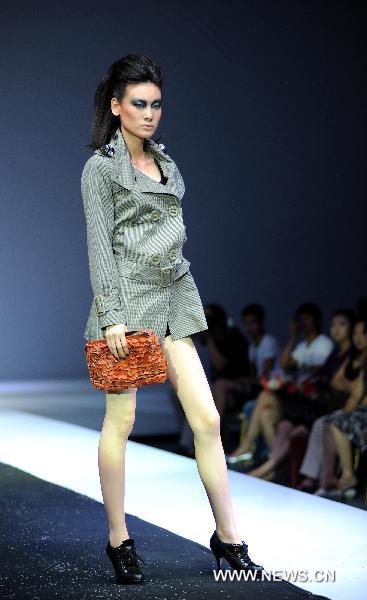
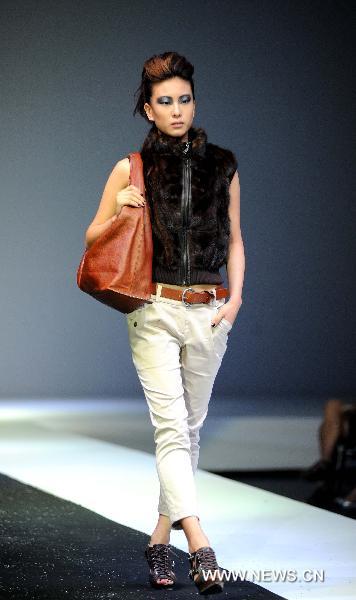
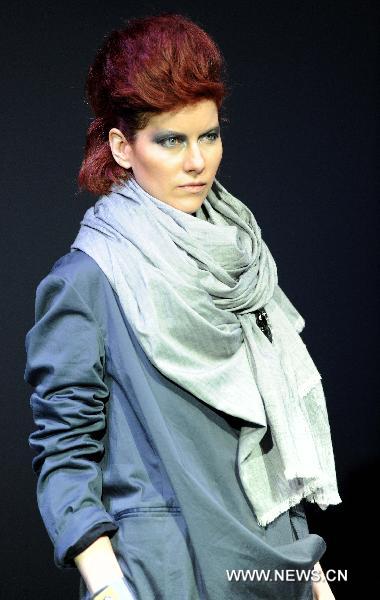
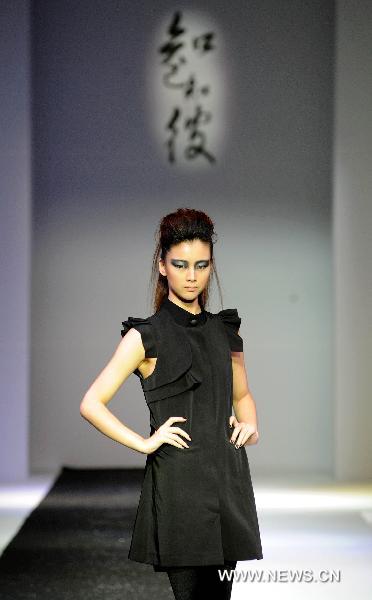
Models present fashionable styles designed by stylist Wang Gang during the 21st Dalian international fashion festival in Dalian, a coastal city in northeast China's Liaoning Province, on the night of Sept. 6, 2010.

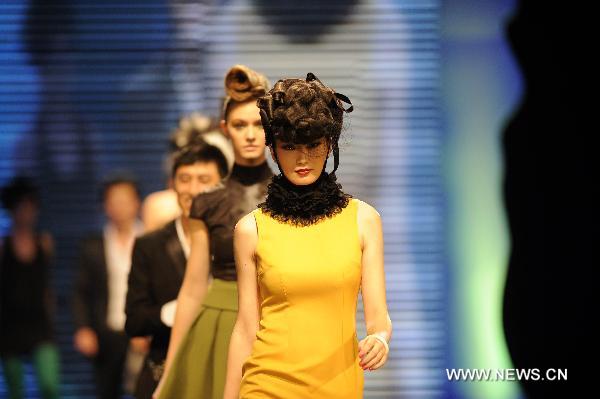

Children models present creations during the 21st Dalian international fashion festival in Dalian, a coastal city in northeast China's Liaoning Province, on the night of Sept. 6, 2010.
